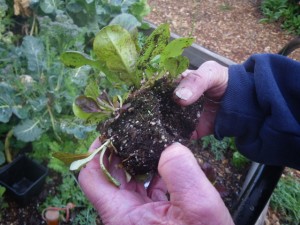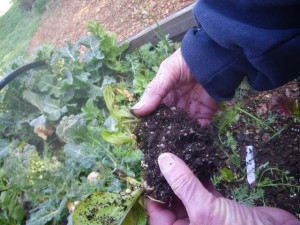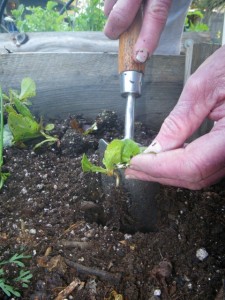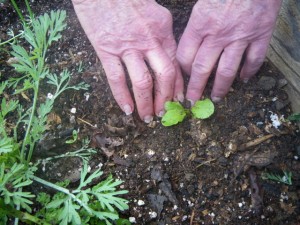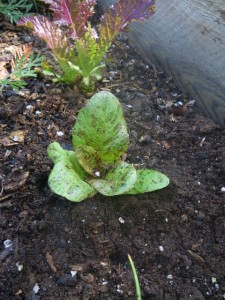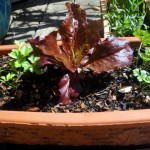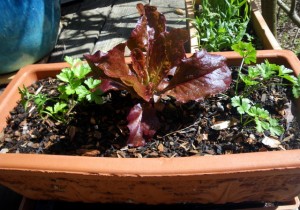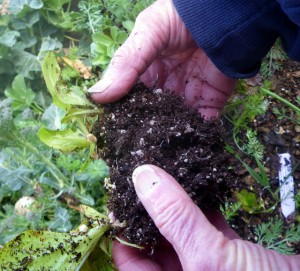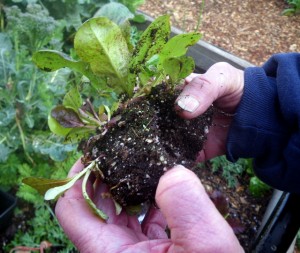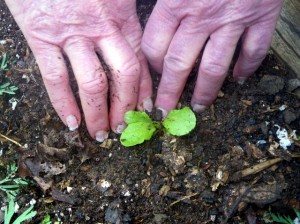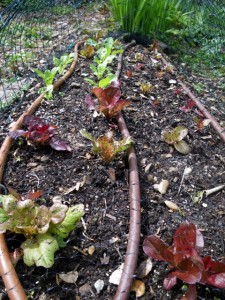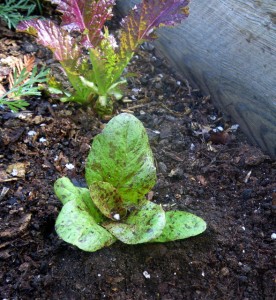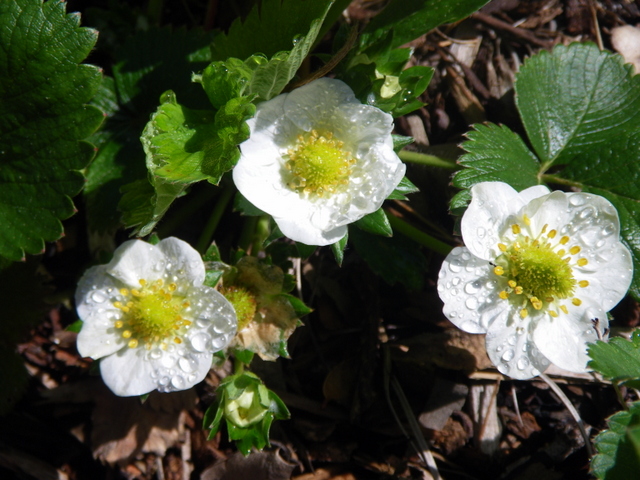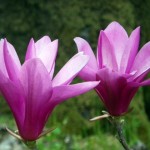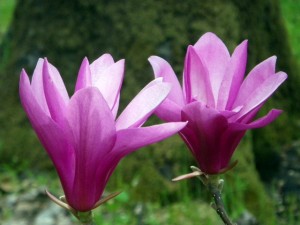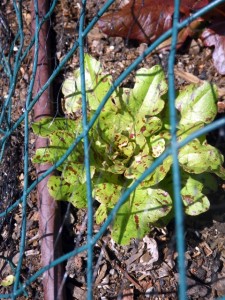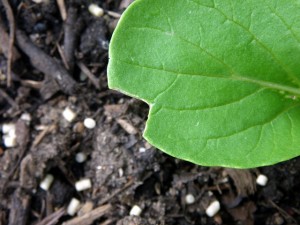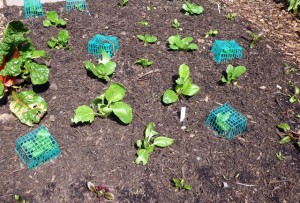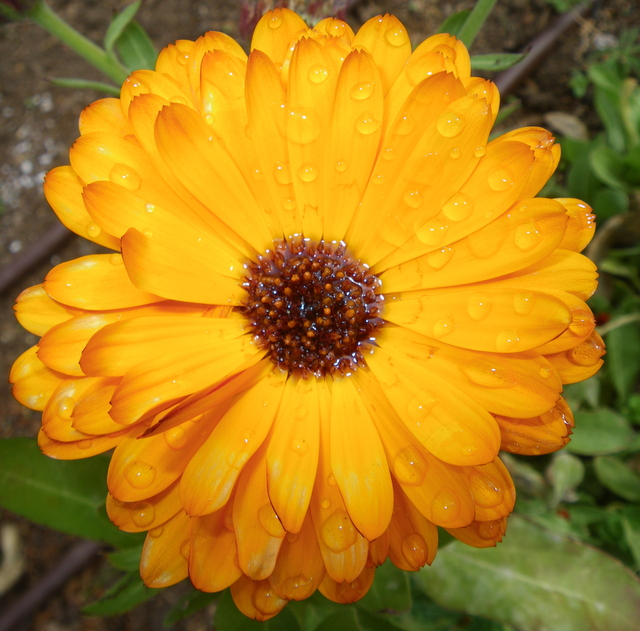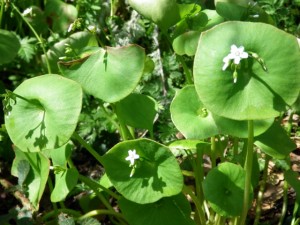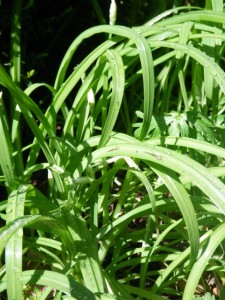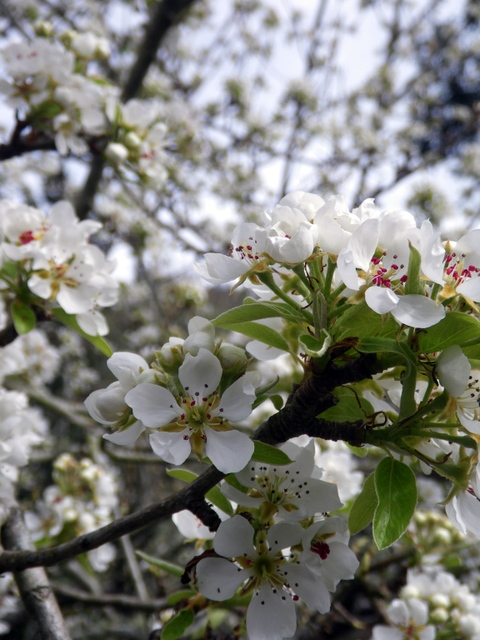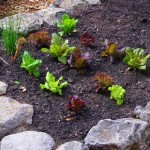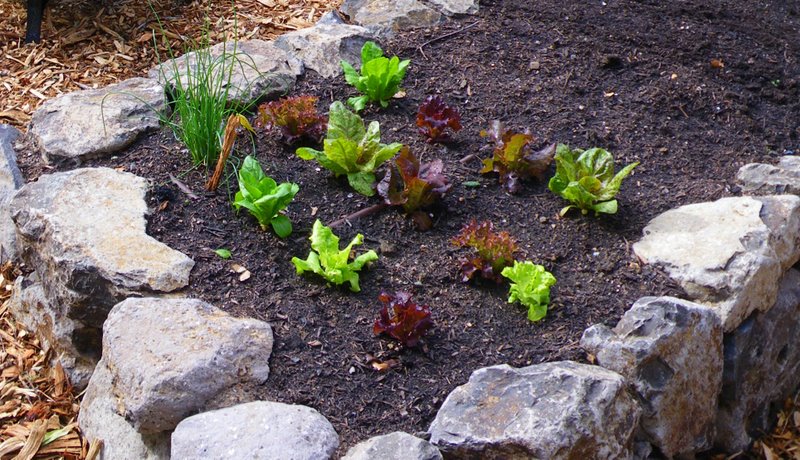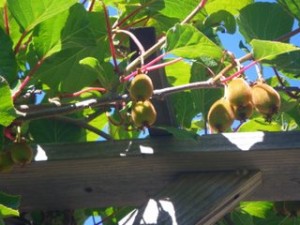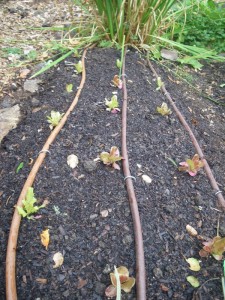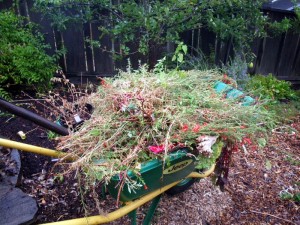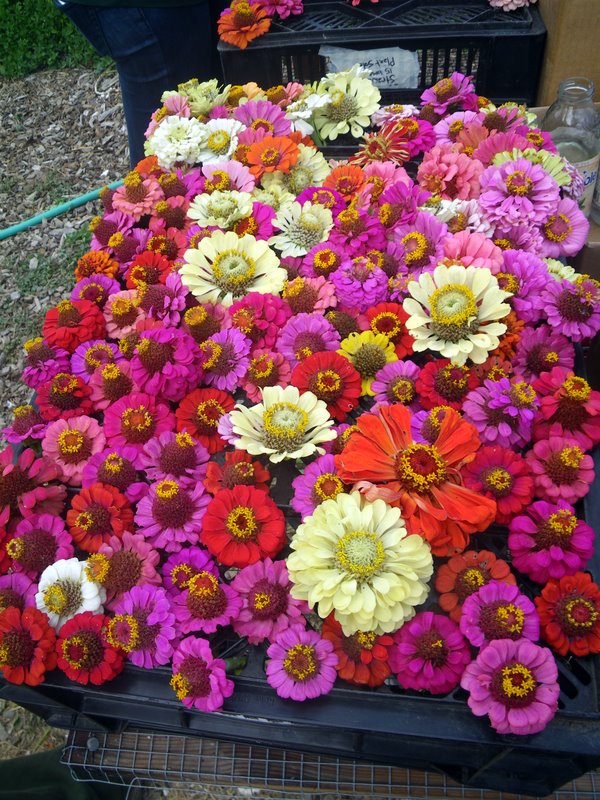by Avis Licht
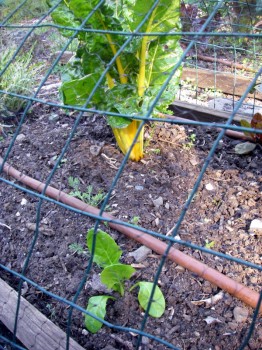
The larger chard in the upper part of the photo was planted in November. The baby chard seedling was sown in January and planted in March. They will provide delicious greens for more than a year.
You might be surprised at how early you can start sowing and planting your Spring vegetables. Of course, I’m not talking about snow or frosty ground. BUT, still there are a few great crops that can withstand what nature throws at them. If you live in a really cold clime, then you can start sowing indoors in many places. For those of you who live where the snow has left or never been, then consider these great plants.
LETTUCE: This is one of my family’s favorite foods. Mixed with other raw vegetables it’s a sure winner. I love butter lettuce, like the Marvel of Four Seasons, Red romaine and baby Bibb.
BOK CHOY: An Asian green that has a delicate flavor and can be eaten both raw and cooked. You can sow this either in pots or directly in the ground.
CHARD: One of the easiest to grow and most nutrious greens. And it’s not only green. It comes in rainbow colors of red, yellow, orange and green. The variety I like to grow is Rainbow chard, of course. You can sow it in pots early and then transplant them or sow directly in the ground when it’s above 50 degrees.
BROCCOLI: There are different varieties of broccoli. Kale, cabbage and cauliflower are included in this family. But it doesn’t matter which one you grow, they’re all great. After I harvest the main crown from the broccoli, the plant grows many, many side shoots that are just as good. Also, the leaves are good to eat as well.
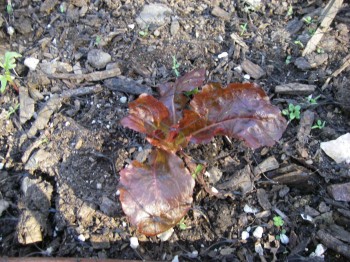
Red lettuce seedlings are planted between the broccoli plants. They are a good companion plant to broccoli. The broccoli is planted 2 feet apart, which leaves a lot of room between them. While they are small, it’s good to plant the lettuce seedlings which will be harvested before the broccoli gets too big.
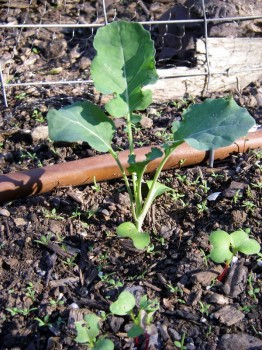
Broccoli seedling started in January, planted outdoors in March. I also sowed radishes in between the broccoli. The radishes will grow quickly and be harvested before the broccoli covers the area.
Check out my Store for tools that I recommend and use myself. A good tool should last a long time and make your work easier and safer. If you shop through my Amazon store I get a small fee that helps support this free blog.
Gardening tools and seeds

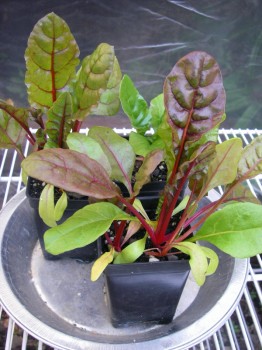
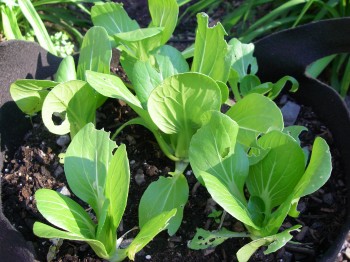
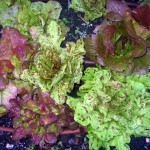
 Follow
Follow

